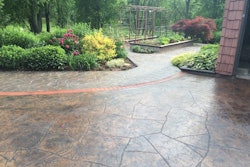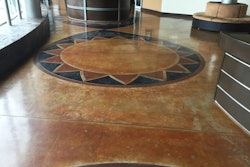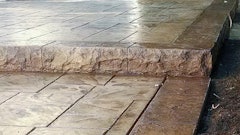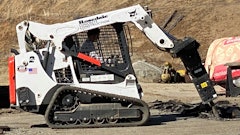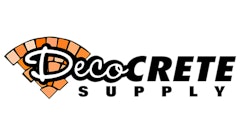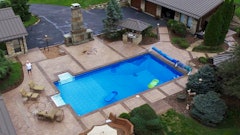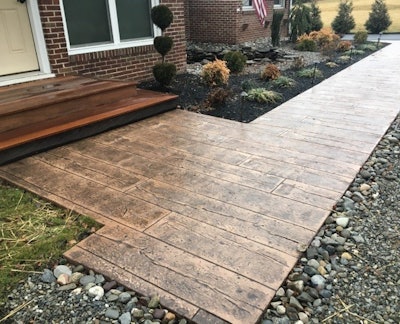
During the first century BC, Marcus Vitruvius Pollio, a Roman architect, engineer and designer penned a concept in his de Architectura book of works. The concept for art and architecture alike was that a structure must contain three identifying qualities, Firmitas, Utilitas, and Venustas; that a structure must be solid, useful, and beautiful.
That old Roman was onto something, and the world of decorative concrete bears his everlasting signature. Solid, useful, and beautiful are all terms used every day in the world of decorative concrete, and stamped concrete is the epitome of Vitruvius’ concepts. In today’s market, stamped concrete allows for a myriad of both design and color choices and can be the perfect choice for interior and exterior applications.
In choosing stamped concrete, owners and architects are faced with some significant challenges and decisions. And, as in most construction scenarios, proper planning is essential to achieving a great stamped floor. The planning process is critical and should be very detailed starting with initial mix design. Owners and architects should pay specific attention to mix design and start with a candid conversation with the ready-mix supplier about actual or possible job site conditions. 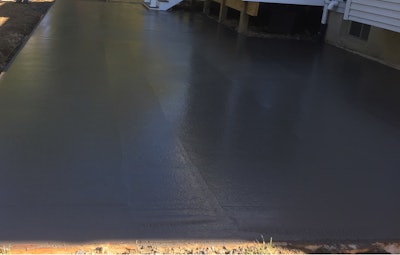 There is a limited window between finishing and stamping as the concrete begins to harden. Most contractors will perform a standard steel trowel finish; however, Jon Scally with Mountaineer Concrete and Excavation often employs a wooden trowel to keep the concrete pours open throughout the finishing process.Mountaineer Concrete and Excavation
There is a limited window between finishing and stamping as the concrete begins to harden. Most contractors will perform a standard steel trowel finish; however, Jon Scally with Mountaineer Concrete and Excavation often employs a wooden trowel to keep the concrete pours open throughout the finishing process.Mountaineer Concrete and Excavation
Traditionally, the best mix designs for stamped concrete revolve around paste. A mix design featuring heavy paste allows for the very sharp edges that are critical to flawless stamping.
Fly ash is very common in these mixes, as well. As part of the overall mix, fly ash tends to add more fines and improve finishability in stamped concrete. Fly ash has also been proven to enhance overall durability to concrete slabs, which is in part why it is common in today’s mix designs. Aggregate should be discussed and determined.
In discussions with Jon Scally with Mountaineer Concrete and Excavation, he recommends pea gravel in lieu of #57 (3/4” stone). The use of pea gravel keeps both the aggregate from interfering with the stamping process and negates the opportunity for larger aggregate to rise to the top during the finishing process.
During the initial planning phase, color needs to be determined as a critical part of the overall mix, as well. While not always the case, most concrete stamping contractors choose to work with a base integral color in the mix.
Whatever the choices concerning mix design may be, the most crucial factor is standardizing that mix throughout the pour process to ensure uniform color and finish in stamped concrete.
After determining the layout, the mix design, and the base color, the slab is ready to be poured and finished. Traditionally, a stamped floor requires a compacted stone base at a minimum of 3 inches.
Most contractors use traditional doweling and/or mesh as an integral part of the floor surface in keeping with common slab construction techniques. Contractors try to pour at less than 20 yards of finishable surface, but the pour size reflects proportionally to the size and abilities of the stamping crew.
There is a limited window between finishing and stamping as the concrete begins to harden. Most contractors will perform a standard steel trowel finish; however, Scally often employs a wooden trowel to keep the concrete pours open throughout the finishing process. The use of a wooden trowel becomes particularly important if integral color is not an option and the primary color needs to be floated into those open pores.
As the concrete begins to set and harden, the stamping process should begin. As a rule of thumb, the slab is ready to stamp when your finger can only penetrate the surface to the depth of a dime.
Just prior to concrete stamping, most contractors will apply a form release agent. Form release agents are available in a variety of colors and are the perfect way to drag in accent colors on your floor. These agents are available in both wet and dry forms.
The dry powdered form release agent is generally brushed on with a standard concrete brush. The powder absorbs water from the finished concrete and will lend to truly one of a kind patterns and designs as an accent color. If a liquid form release agent is chosen, it is misted onto the slab prior to the stamp being applied. Stamping contractors play to their strengths, and the ultimate decision regarding the specific form release agent should be left to their individual discretion.
After the form release agent has been applied, the stamping pads follow. Stamping pads are available in dozens of designs and textures from multiple manufacturers. The mats are also offered in several variations to include relatively heavy industrial mats, all the way through flexible mats to create unique effects on edges and corners.
As with the form release agents, stamping contractors have favorites and it's important to give the contractor some latitude in the choice of a mat with which that specific contractor is comfortable. As mats are applied to the slab, tamped into place, and removed an experienced stamping crew becomes indispensable.
It is most effective for the stamping crew to work in groups of three. A three-person group allows one to place the stamp, one to tamp the stamp into place, and one to remove the stamp while touching up. It is extremely important that the crew member charged with tamping the stamps into place hits all edges and corners efficiently to produce the most texture and crispest corners from the stamping mat.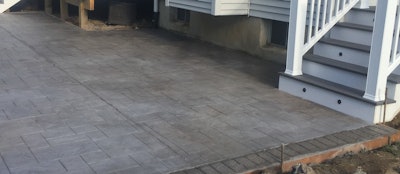 After the initial cure most contractors will wash down the concrete and apply a sealer. Sealers are available in varying degrees of matte and gloss finishes.Mountaineer Concrete and Excavation
After the initial cure most contractors will wash down the concrete and apply a sealer. Sealers are available in varying degrees of matte and gloss finishes.Mountaineer Concrete and Excavation
After the stamping process, the stamped slab should be kept free of dirt and debris until sufficient curing of the slab has taken place. It is vital that traffic be kept off the stamped floor during that initial cure.
Even if the concrete has cured enough so that traffic doesn’t leave indentations, the concrete is still open, and the form release agents are pressure sensitive. It is best to allow 24 hours for the initial cure prior to any other processes. This initial cure time is largely dependent on humidity, and an experienced stamping contractor can gauge when the next steps should take place.
After the initial cure, most contractors will wash down the concrete and apply a sealer. Though sealers are available in varying degrees of matte and gloss finishes, Scally prefers a wet look sealer. The wet look sealers tend to highlight the textures and colors that are part of the stamped concrete floor slab. The natural highlights because of the wet look sealer are one of the reasons that the owner or architect has chosen stamped concrete.
Concrete has re-emerged as a finished surface in today’s architectural designs, and stamped concrete has lead that charge since the 1950’s. A stamped concrete floor just may be the perfect decorative accent on your next project. According to the old Roman, Virtuvius, these floors are truly Firmitas, Utilitas, and Venustas.
Ed. Note:
A special thanks goes to Jon Scally with Mountaineer Concrete and Excavation LLC. Jon and his team are experienced stamping contractors working in the Mid-Atlantic, and can be reached through their website www.mountaineerconcrete.com.
C.T. “Chip” Marshall is the executive vice president of Industrial Caulk and Seal Inc. An award winning, large scale decorative concrete and concrete repair contractor, Industrial Caulk and Seal operates throughout the Mid-Atlantic and Northeast. Both Chip and Industrial Caulk and Seal can be reached through their website www.industrialcaulkandseal.com.



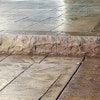
![[VIDEO] Proline Seamless Pattern Stamps at World of Concrete 2017](https://img.forconstructionpros.com/files/base/acbm/fcp/image/2017/02/default.58ab483ca69fc.png?auto=format%2Ccompress&fit=crop&h=167&q=70&w=250)
